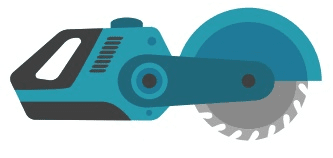The Most Underrated Companies To Keep An Eye On In The Mitter Saw Industry
Understanding the Miter Saw: A Comprehensive Guide
Miter saws are essential tools for any woodworking enthusiast or professional carpenter. Likewise referred to as www.powertoolsonline.uk or drop saws, these effective makers master providing exact and tidy cuts, making them necessary for different applications, from developing detailed moldings to building furniture. In this blog post, we will check out the different types of miter saws, their functionality, functions, benefits, and even maintenance tips. Additionally, we will address some frequently asked concerns to supply a well-rounded understanding of this necessary tool.
What is a Miter Saw?
At its core, a miter saw is a power tool used for making precise crosscuts and miters in a workpiece. The blade is mounted on a swing arm that pivots left or ideal to produce angled cuts. These cuts become crucial when dealing with trim work, framing, and other woodworking jobs that require precision.
Types of Miter Saws
Miter saws are available in several ranges, each developed for specific applications. Below is a table summing up the different types:
Type of Miter Saw
Description
Best For
Standard Miter Saw
Basic design with minimal functions. Cuts at various angles, typically as much as 45 degrees.
Easy crosscuts and fundamental angles.
Compound Miter Saw
Can tilt to create bevel cuts, in addition to miter cuts.
Crown molding and more intricate angles.
Sliding Compound Miter Saw
Functions a sliding system that extends the cut capability.
Wider materials, such as bigger boards or doors.
Dual Compound Miter Saw
Can tilt both left and right for added versatility in bevel cuts.
More intricate woodworking projects.
Functions of Miter Saws
When picking a miter saw, it's essential to consider the functions that will best match your needs. Here's a list of typical functions to search for:
Blade Size: Typically ranges from 8 to 12 inches. Bigger blades can cut thicker materials.
Laser Guide: Projects a cutting line on the workpiece for higher accuracy.
Dust Collection System: Helps keep a clean workspace by gathering debris created during cuts.
Rotating Arm: Allows the saw head to move efficiently and slice at numerous angles.
Bevel Capabilities: Many miter saws can produce both miter and bevel cuts.
Table Extensions: Useful for supporting bigger workpieces, improving the tool's stability.
Security Features: Blade guards and electric brakes to enhance user safety.
Advantages of Using a Miter Saw
Miter saws offer numerous benefits that make them a go-to tool for woodworkers. Here are some advantages:
Precision: Miter saws ensure clean, precise cuts which are essential for professional quality.
Versatility: Capable of performing a range of cuts (crosscuts, miters, bevels), allowing for creative styles.
Effectiveness: Miter saws accelerate the cutting process, specifically when preparing multiple similar pieces.
Safety Features: They typically consist of guards and safety switches that prevent unintentional cuts.
Minimized Waste: Accurate cuts will lessen material waste, improving cost-efficiency.
How to Maintain Your Miter Saw
Appropriate maintenance will extend the life of your miter saw and improve its efficiency. Here are upkeep ideas:
Keep the Blade Sharp: Dull blades can result in imprecise cuts and increased strain on the motor.
Regular Cleaning: Remove sawdust and particles from the motor and the blade after every usage.
Look For Loose Parts: Periodically examine screws and bolts; tighten them as essential.
Lube: Keep moving parts lubricated for smooth operation.
Examine Electrical Components: Regularly check cables and plugs for any indications of wear or damage.
FAQ About Miter Saws
Q1: What is the difference between a miter saw and a circular saw?
A: Miter saws are developed for accurate crosscuts and angles, while circular saws are versatile tools that can make straight cuts in numerous materials.
Q2: How do I pick the ideal miter saw for my projects?
A: Assess the types of cuts you will make, the products you will deal with, and whether you need extra features like bevel capabilities or sliding movement.
Q3: Can I use a miter saw to cut metal or plastic?
A: Standard miter saws are not ideal for cutting metal. Use a blade particularly created for metal or a various type of saw, like a band saw, for that purpose.
Q4: What security preventative measures should I take while using a miter saw?
A: Always use eye security, keep hands clear of the blade, guarantee the saw is stable, and never ever start the saw while the blade protests the product.
Q5: How often should the blade be altered?
A: Change the blade when you see a decrease in cutting effectiveness or if you see damage or extreme wear.
A miter saw is a basic tool for anybody serious about woodworking. Comprehending its abilities, types, features, and correct upkeep can significantly impact the quality of your jobs. Whether you're a newbie or an experienced woodworker, investing in a great miter saw will enhance your craft and yield fantastic outcomes. With the ideal knowledge and mindful handling, a miter saw will become an important ally in your woodworking journey.
